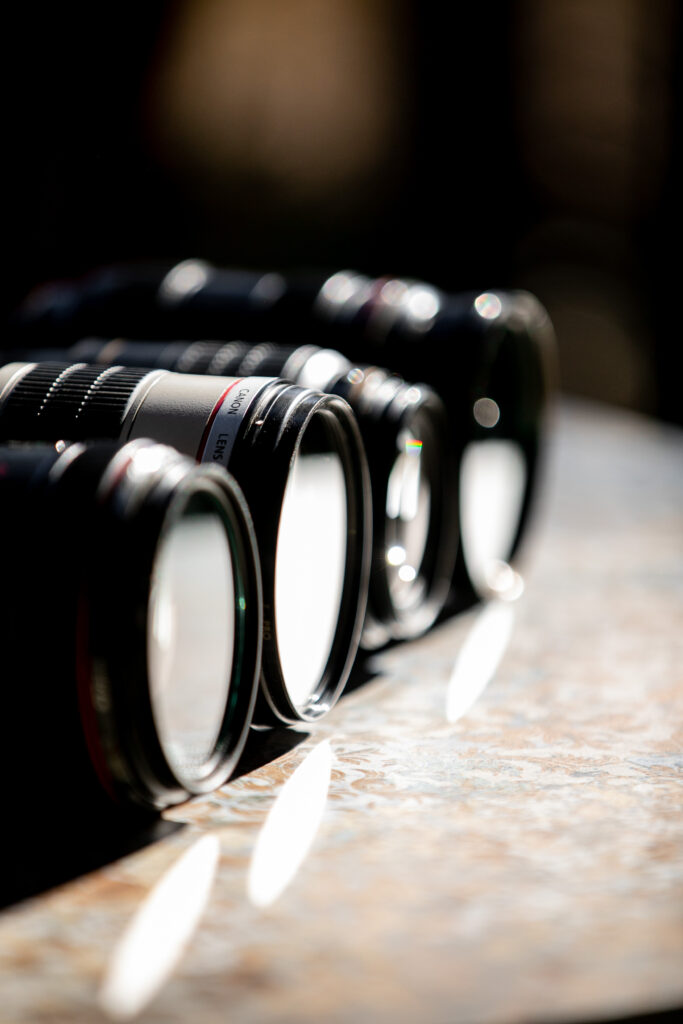
As an Amazon Associate we earn from qualifying purchases.
A real estate photographer must have the proper gear, especially the best lenses, to shoot real estate listings as accurately as possible. But what lens is best for real estate
Quick Navigation
The Canon EF 11-24mm f/4L USM is the best lens for real estate
Since real estate photographers have varying styles, I've put together comprehensive reviews and comparisons of other contenders for the best lens for real estate
The Canon EF 11-24mm f/4L USM wide-angle lens is the best lens for real estate photographers looking for a balance between focal range, aperture, optical design, and price point. Its starter 11mm focal length makes this Canon lens arguably the best canon lens for real estate
The f/4L aperture in this Canon lens is only moderately wide, yet you can still achieve a precious focus point for vast spaces. In comparison, f/4L is a smaller maximum aperture than that of the Nikon lens 12-24mm. Although you can use external flash and light modifiers with this wide-angle lens to boost lighting in dim environments.
The focal length has a minimum focusing distance of 11 inches. Hence, even if real estate photographers are shooting in a small room, this Canon wide-angle for real estate
Like the Canon EF 16–35mm, the Canon 11-24mm f/4L wide-angle lens is part of the Canon L series, some of the best lenses for interior
Although real estate photographers won't probably shoot fast-moving subjects with this wide-angle lens, the USM ring saves you precious seconds in setting autofocus for professional real estate photos and videos. This Canon lens is helpful during dusk and dawn when you only have a few minutes of leeway. However, the best lens for interior real estate
The Canon EF 16-35mm f/2.8L III USM is another premium option for the best lens for real estate photography. Its maximum aperture and focal range let you work in low-light exteriors and interiors.
The focal length helps real estate photographers compose interior shots easily, mainly when you have limited shooting space. Still, like the Nikon 17-35mm f/28, you can zoom up to 35mm if you need tighter real estate
Serving as a better alternative to the Canon 16-35mm f/4G, this high-performance lens uses a constant aperture of f/2.8 that provides superior control over the depth of field and could be the best canon lens for interior
Since real estate photographers can maintain this aperture throughout the zoom focal range, it won't be difficult to retain even exposure. This is a valuable feature when real estate photographers need to shoot in dimly lit rooms or during inclement weather.
The optical design of the 16-35mm f/2.8 improves edge sharpness to combat lens distortion due to the broader angle view. The package even comes with a UV protection filter to remove bluish cast in images, making real estate pictures look as vibrant as they are in real life.
Suppose you're looking for the best lens for real estate
The focal length is more limited than the Canon EF 11-24mm f/4L. However, Tokina's focal length can train your real estate
Meanwhile, it has a constant aperture, similar to the Canon 16-35mm f/2.8. As a result, it delivers lots of light to the sensor to help you shoot even at night. Consequently, you won't have to use high ISO values, avoiding image noise.
The downside is that this Tokina best real estate
Full-frame cameras provide a fuller field of view and better low-light performance. With such benefits, it's only fitting to pair it with the best lens for real estate
One of its highlights is an impressive focal range with an ultra-wide angle of view. This focal range enables you to take clear and well-defined images of wider spaces.
This wide-angle lens has a maximum aperture of f/2.8, which remains constant throughout the zoom focal range. This feature provides superb image quality even in spaces with poor lighting conditions.
Both the zoom and focus rings work with smooth precision for maximum accuracy while shooting. Much like Canon 11-24mm's USM, Tamron's Ultrasonic Silent Drive Motor enables the best camera lens to focus both quickly and silently.
Similar to the Canon EF 16-35mm, this real estate
With an exceptional autofocus system and color reproduction, the Nikon AF-S X NIKKOR 17-35mm f/2.8D is ideal for a real estate photographer using APS-C cameras. Its low-light functions also cater to twilight, architectural, and interior real estate
The focal length of the Nikon 17-35mm f/2.8 lens is almost similar to the Canon EF 16–35mm f/4G. However, this has a better light-gathering capacity. The 17mm end is most helpful, especially when shooting real estate, corners, pantries, and bathrooms.
While the NIKKOR 17-35mm f/2.8 is mainly a full-frame lens for real estate
It has a bigger aperture than the Nikon 12-24mm, making your real estate photos tack sharp in nearly every f-stop. You can even shoot up to f/8, and you would still achieve razor-sharp images. However, it would be better to open up to f/2.8 to boost exposure.
This Nikon lens for real estate
Tilt-shift lenses for professional real estate
Despite being a more affordable lens alternative to the Canon TS-E 24mm, this Rokinon lens has equally excellent optical tilt features. Like most of the best lenses, the Rokinon lens enables a real estate photographer to modify the depth of field regardless of the distance.
The Rokinon TSL24M-C 24mm tilt-shift lens can still provide a real estate photographer with the necessary parallel shift of the optical lens for a smoother transition in the focal plane angle.
At f/3.5, this tilt-shift lens has the same aperture as the TS-E 24m, yet a bigger f-stop than the Canon 17-40mm f/4. While the Canon TS-E has a bigger perspective at 180 degrees, the 90-degree view of this Rokinon lens is enough for average-sized homes.
Besides, the 24mm fixed focal length offers a professional photographer greater control over the depth of field to guarantee overall image sharpness. It even has less vignetting than its Canon TS-E counterpart.
Combining an ultra-wide angle with a constant maximum aperture of f/4, the Nikon AF-S DX NIKKOR 12-24mm f/4G ultra-wide-angle lens is another contender as the best lens for real estate
It has a wide focal length range of 12-24mm, which is the perfect focal length spot for both interior
Its maximum aperture of f/4 provides consistent light transmission throughout the zoom range, enabling you to capture high-quality images. However, its f/4 aperture is narrower compared to the Canon EF 16-35mm f/2.8.
This f/4 ultra-wide-angle lens for real estate
Quite similar to Tamron's Ultrasonic Silent Drive and Canon's USM, the Nikon 12-24mm f/4 ultra wide-angle lens uses a Silent Wave Motor to provide a fast and quiet autofocus performance for more effortless operation.
Photographing residential real estate is pretty challenging because you have to deal with massive spaces, color balance, and tight angles. With that said, the Sony FE 12-24mm f/4G zoom lens can be the best wide-angle lens for real estate
Its ultra-wide perspective helps real estate photographers make properties appear more prominent in real estate photos by putting the background deeper into the composition. A camera with a wide-angle lens for real estate with this angle of view also makes your interior shots look like realistic walkthroughs.
Its intuitive buttons enable you to customize functions that can help you recompose faster, especially when applying autofocus. In effect, you get clean-looking real estate images with crisp details, beautiful contrast, and even focus.
The Sony 12-24mm f/4G wide-angle lens also has the same f/4 aperture, which isn't as wide as the other wide-angle lenses. However, the sweet spot of this Sony wide-angle lens for real estate
More than that, this wide-angle lens has weather-sealing like the NIKKOR DX 12-24mm, so this is safe to use for exterior, architecture, and real estate
However, like the Sigma 12-24mm f/4, the Sony 12-24mm f/4 ultra-wide lens lacks image stabilization. Thus, make sure to bring a tripod when using this real estate
Are you looking for the best lens for real estate
The focal length range of 12-24mm enables you to shoot wide spaces while keeping the background and other far-off objects within the frame in focus. What's more, this lens also allows you to shoot clear and well-defined images of tight spaces.
Like the NIKKOR 16-35mm f/4G ED VR Lens, this Sigma lens has a moderately wide constant maximum aperture of f/4 that allows adequate light to reach the sensor. Shorter shutter speeds prevent the items in the space from looking diminutive in the frame.
Furthermore, you can use Sigma 12-24mm f/4 as a substitute for the Canon 17-40mm f/4. However, while it produces center-sharp images, it tends to drop off at the corners.
The best lenses for real estate
| Product | Maximum Aperture | Weather Sealing | Format Compatibility |
|---|---|---|---|
| Canon EF 11-24mm USM | f/4 | Yes | Full-Frame and Crop Sensor |
| Canon EF 16–35mm USM | f/2.8 | Yes | Full-Frame and Crop Sensor |
| Tokina ATX-i 11-16mm | f/2.8 | No | Crop Sensor Cameras |
| Tamron A012E SP 15-30mm | f/2.8 | Yes | Full-Frame Cameras |
| NIKKOR FX 17-35mm | f/2.8 | No | Full-Frame and Crop Sensor |
| Rokinon TSL24M-C 24mm | f/3.5 | No | Full-Frame and Crop Sensor |
| NIKKOR DX 12-24mm | f/4 | Yes | Crop Sensor |
| Sony FE 12-24mm | f/4 | Yes | Full-Frame |
| Sigma 12-24mm DG HSM | f/4 | No | Full-Frame |
The focal lengths dictate how much of a scene the best camera lens for real estate
For instance, the Canon EF 11-24mm and Tokina ATX-i 11-16mm have the widest focal length angles at 11mm, perfect for photographing real estate with small spaces like bathrooms. The Canon EF 16–35mm and Nikon 17-35mm feature the narrowest angle of view at 35mm, yet even this focal length is wide enough to photograph spaces.
What is the best lens for real estate

The aperture refers to how wide it stays open when you take a picture. So, the wider the real estate lens opens, the lower the aperture value. When choosing the best lens for real estate
This is because the best lenses will be open enough to allow more light to strike the sensor. In effect, you can take high-quality pictures of spaces even in poor lighting conditions.
The Canon 16–35mm, Tokina 11-16mm, Nikon 17-35mm, and Tamron 15-30mm have the biggest value at f/2.8. This results in a shallower depth and more focus. The values f/3.5 and f/4 can also collect lots of light to boost exposure and improve image quality.
Yes, you can use the 50mm lens for real estate photography, depending on the size of your property. Normally, for a normal-sized property, you might need to use a lens that is around 24-70mm. If you want a prime lens, the 50mm lens lies in the middle of this range.
It's essential that you choose the best lens, camera body, and other accessories like gloves to take professional real estate images. You'll also need to consider compositions and angles depending on the time, space, and property features. Use appropriate post-processing software to enhance the clarity and vibrancy of your real estate photos.
The best lens brand would depend on its compatibility with your camera body, focal length, and aperture to shoot subjects properly. However, Sony, Canon, and Nikon are the major brands that manufacture top-rated lenses. Meanwhile, Tamron, Tokina, Sigma, and Rokinon are reliable third-party brands.
We hope that this detailed guide will help you choose the best lens for real estate
